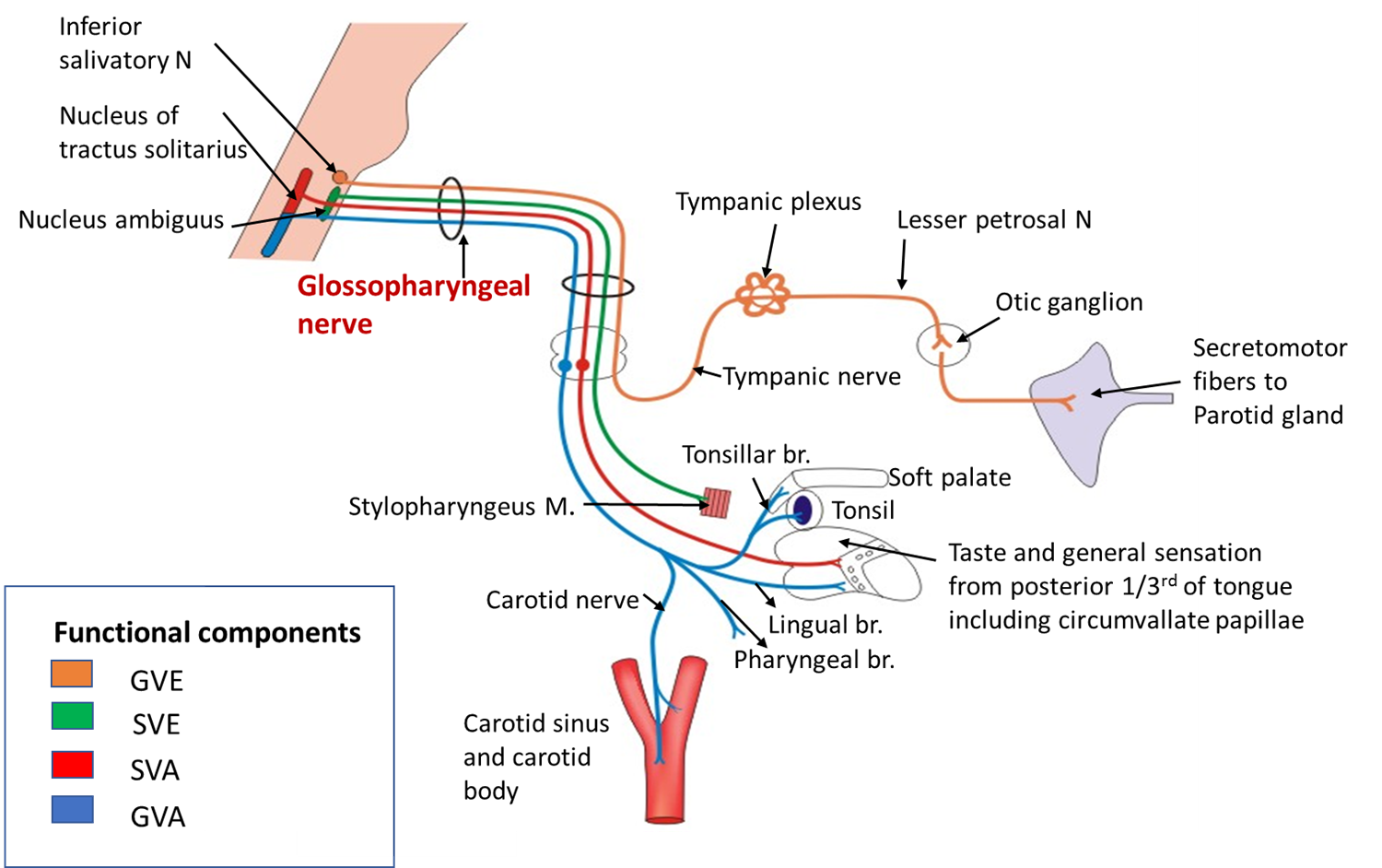Advertisements
Introduction
Glossopharyngeal nerve is the ninth cranial nerve. It is a mixed (sensory and motor) nerve.
Origin: Its nuclei viz. nucleus ambiguus, inferior salivatory nucleus and nucleus of tractus solitarius are located in the medulla oblongata.
Name the nuclei, functional components and distibution of glossopharyngeal nerve .
Following are the nuclei, functional components of glossopharyngeal nerve:
| Functional component | Nuclei | Structures innervated |
|---|---|---|
| SVE (Special visceral efferent) | Nucleus ambiguus | Muscle derived from 3rd branchial arch- Stylopharyngeus muscle. |
| GVE (General visceral efferent) | Inferior salivatory nucleus | Secretomotor fibers to parotid gland |
| GVA (General visceral afferent) | Nucleus of tractus solitarius | Carries general sensations from middle ear, auditory tube, soft palate, oropharynx, tonsil & posterior 1/3 rd of tongue. |
| SVA (Special visceral afferent) | Nucleus of tractus solitarius | Carries taste sensation from posterior 1/3rd of tongue ( including circumvallate papillae) |
Describe the course of Glossopharyngeal Nerve.
- It emerges from the ventral surface of medulla posterior to the olive.
- Leaves the cranial cavity through the jugular foramen.
- Gives tympanic branch which enters tympanic cavity to form tympanic plexus.
- In the neck it lies medial to styloid process and descends between the internal jugular vein and internal carotid artery and then between external and internal carotid arteries.
- It then passes along with stylopharyngeus muscle through the gap between superior and middle constrictors of pharynx and divides into terminal branches.
Name the branches of glossopharyngeal nerve and the structures supplied.
- Tympanic branch: carries preganglionic parasympathetic fibers to parotid gland.
- Carotid branches: supplies carotid body and sinus.
- Pharyngeal branches: joins pharyngeal plexus.
- Tonsillar branch : supplies palatine tonsil and soft palate.
- Lingual branch: supplies posterior 1/3rd of tongue
- Muscular branch to stylopharyngeus.

Applied Aspects
Lesion of glossopharyngeal nerve
- Loss of general and taste sensation from posterior 1/3rd of the tongue.
- Loss of salivation from parotid gland.
- Ipsilateral loss of gag reflex.
Gag reflex
On touching the posterior part of tongue or soft palate or pharynx there is reflex contraction of pharyngeal muscles causing gagging and retching.
- The afferent fibers for gag reflex pass in glossopharyngeal nerve.
- The efferent fibers for gag reflex pass in vagus nerve.

Thank you so much mam for this site. it really makes our concept clear.
maam your blog is amazing,its very helpful.
good